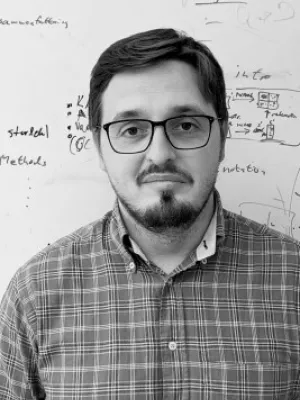
Victor Olariu
Senior lecturer

Prepatterning in the stem cell compartment
Author
Summary, in English
The mechanism by which an apparently uniform population of cells can generate a heterogeneous population of differentiated derivatives is a fundamental aspect of pluripotent and multipotent stem cell behaviour. One possibility is that the environment and the differentiation cues to which the cells are exposed are not uniform. An alternative, but not mutually exclusive possibility is that the observed heterogeneity arises from the stem cells themselves through the existence of different interconvertible substates that pre-exist before the cells commit to differentiate. We have tested this hypothesis in the case of apparently homogeneous pluripotent human embryonal carcinoma (EC) stem cells, which do not follow a uniform pattern of differentiation when exposed to retinoic acid. Instead, they produce differentiated progeny that include both neuronal and non-neural phenotypes. Our results suggest that pluripotent NTERA2 stem cells oscillate between functionally distinct substates that are primed to select distinct lineages when differentiation is induced.
Publishing year
2010-05-28
Language
English
Publication/Series
PLoS ONE
Volume
5
Issue
5
Document type
Journal article
Publisher
Public Library of Science (PLoS)
Topic
- Cell and Molecular Biology
Status
Published
ISBN/ISSN/Other
- ISSN: 1932-6203